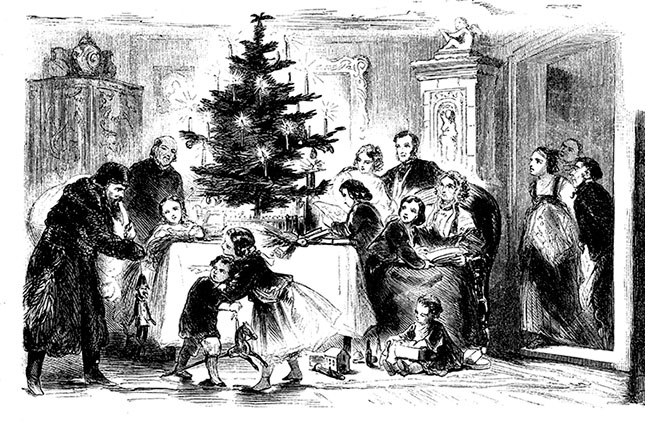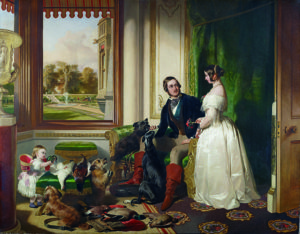
Why do we send cards, eat turkey and decorate a tree at Christmas? Here’s our run down of how and why we celebrate the festive season the way we do…
Christmas traditions have been evolving for 2,000 years but until the beginning of the 19th century the festive season remained a low-key affair; when most of the Victorian Christmas traditions traditions that now define Christmas for us only sprung into life. But once the founding of festive activities started, it proved unstoppable.
By the time Charles Dickens published his seasonal masterpiece A Christmas Carol in 1843 Christmas celebrations were already starting to look like a familiar affair with turkeys, charity, carols and decorations.
So, what are the Victorian Christmas traditions we still do today?
Christmas trees
This most festive of Victorian Christmas traditions can be traced back to Queen Victoria’s marriage to Prince Albert, who was born in Germany where trees were a tradition of the season. In 1848, a drawing of the Royal Family celebrating around a decorated tree was published and it wasn’t long before homes all around Britain were sporting resplendent trees with candles and homemade decorations at Christmas.

Christmas cards

Children were encouraged to write messages to their family during the season but it was with the arrival of the Penny Post in 1840 and the dawn of the Industrial Age that Christmas card became a de facto part of the season. Civil servant Henry Cole was the first to commission an artist to design a card for sale in 1843; in fact, these first cards we too pricey for everyone but the idea caught on and children –including Queen Victoria’s – made their own. As technology advanced and printing became cheaper, the price dropped and alongside the introduction of the halfpenny postage rate in 1870, the Christmas card industry quickly took off.
Christmas decorations
Homes had been decorated with evergreens since medieval times but the tradition became much more elaborate thanks to the Victorians, who gave us wreaths, ivy ribbons, tree ornaments and mistletoe balls. By the 1880s, decorations were being mass produced.
Christmas gifts
Gift giving had traditionally been at new year but moved as Christmas became more important to the Victorians. At first, gifts remained as modest as ever – fruit, nuts, sweets and small handmade trinkets – and hung on the Christmas tree. However, as giving presents took centre stage and the gifts became bigger, they moved under the tree.
Christmas Turkey
A mid-winter feasting festival stretches back into the mists of time but the festive turkey first appears in England in the 16th century, with Henry VIII purportedly being the first monarch to dine on it at Christmas. The tradition rapidly spread throughout the country, but it was still prominently goose on the Christmas table until the Victorian era. A famous Christmas dinner scene appears in A Christmas Carol, where Scrooge sends Bob Cratchitt a large turkey.
Read more:
Quintessentially British Christmas gifts: Our Christmas gift guide





 © 2024
© 2024